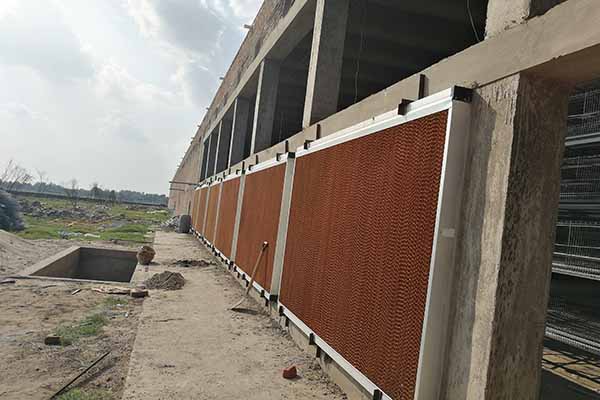Automatic Cages for 60,000 Chickens in Ghana: A Revolution in Poultry Farming
Introduction
The poultry industry in Ghana has witnessed significant growth over the years. To keep up with the increasing demand for chicken meat and eggs, modern poultry farming techniques are essential. One such technique is the use of automatic cages for housing chickens. This article delves into the benefits of automatic cages for 60,000 chickens in Ghana and why they are becoming a game-changer in the poultry farming sector.
Benefits of Automatic Cages for 60,000 Chickens
1. Space Efficiency: Automatic cages allow for optimal use of space, accommodating up to 60,000 chickens in a limited area. This is crucial for maximizing production without the need for extensive land.
2. Health and Welfare: These cages ensure a clean and hygienic environment for the chickens, reducing the risk of disease outbreaks. The automatic feeding and watering systems minimize the need for manual handling, further reducing the chances of injury to both the chickens and the farm workers.
3. Cost-Effective: Although the initial investment for setting up automatic cages may be higher, the long-term savings on labor, feed, and healthcare make them a cost-effective solution. The increased production and reduced mortality rates further contribute to the overall profitability of the farm.
4. Ease of Management: With automatic feeding and watering systems, managing a large flock of chickens becomes easier. The farm manager can monitor the chickens’ health and growth through the automated data collection systems.
Case Study: Automatic Cages in Ghana
A Ghanaian poultry farm successfully implemented automatic cages for 60,000 chickens. The results were impressive:
– Production: The farm’s annual production increased by 20% compared to traditional farming methods.
– Mortality Rate: The mortality rate decreased by 15%, resulting in more profitable sales.
– Cost Savings: The farm saved an average of 30% on labor and feed costs.
How to Implement Automatic Cages for Your Poultry Farm
1. Assess Your Needs: Determine the size of your farm and the number of chickens you wish to house in automatic cages.
2. Choose the Right Supplier: Partner with a reputable supplier who can provide high-quality automatic cages and after-sales support.
3. Plan Your Layout: Design a layout that ensures efficient space utilization and easy access for maintenance and cleaning.
4. Training: Ensure your farm workers are adequately trained to operate and maintain the automatic cages.
Conclusion
Automatic cages for 60,000 chickens in Ghana represent a significant advancement in the poultry farming industry. By adopting this modern technology, poultry farmers can improve their production, reduce costs, and ensure the health and welfare of their chickens.
For more information on automatic cages and other poultry farming solutions, please leave a comment below or contact us for a free, no-obligation consultation and equipment quote.





